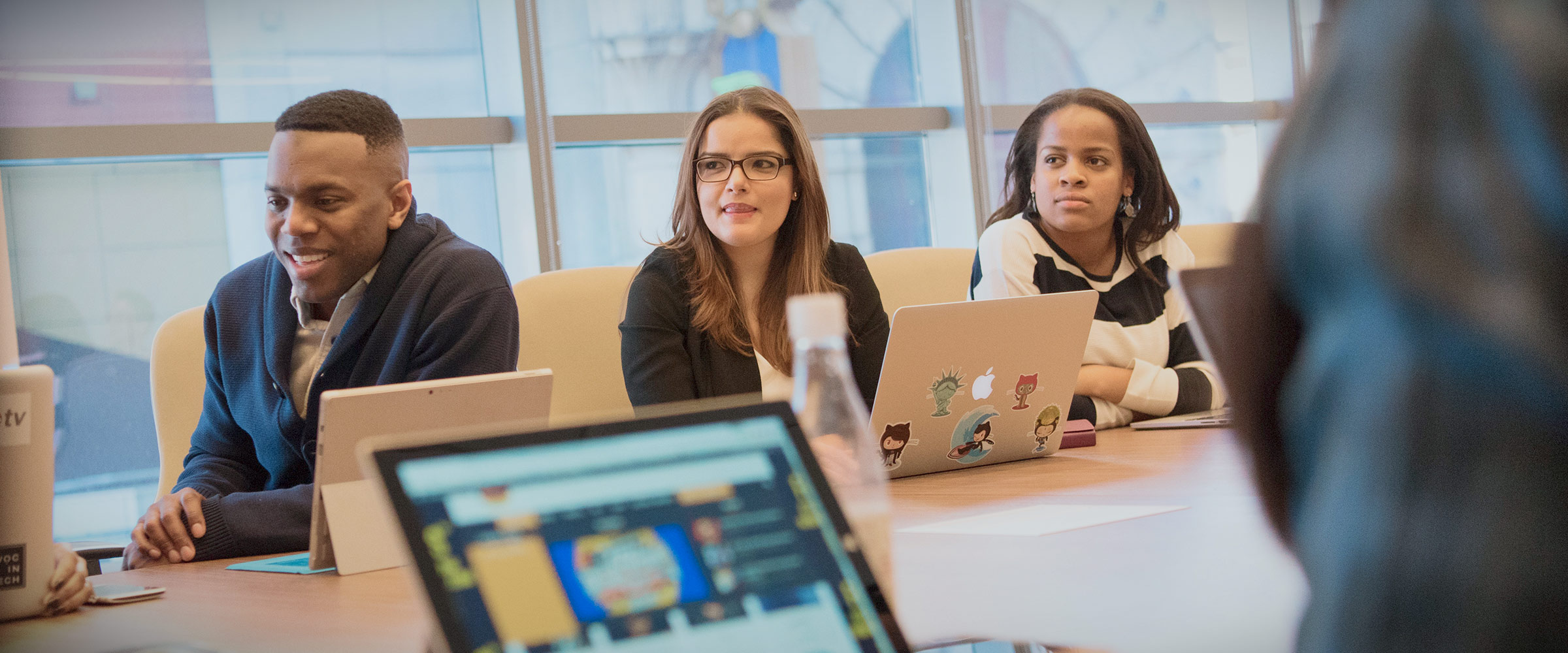Social language groups, sports, arts, and creative extracurricular activities are enriching and exciting for many young autistic students. At the same time, some parents will notice their student’s interest in STEM classes and activities and want to find more outlets for exploration. What can parents do now to support an early interest in STEM, which could later lead to a STEM college education and STEM employment? For even the youngest children, how can parents foster STEM interests and prioritize something students truly enjoy?
Choosing and exposing children to STEM concepts early will aid development and excitement about these areas. According to a recent report (McClure et al., 2017), “There’s growing evidence that very young children from all backgrounds — even children from birth to age 8 — learn important science, technology, engineering, and math (STEM) skills and habits of mind from everyday play and early learning activities.” Furthermore, “brain and skills-building experiences early in life are critical for child development, and high-quality early STEM experiences can support children’s growth across areas as diverse as executive function and literacy development,” which can be challenging for students who have autism (McClure et al., 2017).
Younger Students

So how can parents expose STEM concepts and nurture children’s interests?
The NSF-funded report, STEM Starts Early, recommends both teachers and parents being intentional and knowledgeable about including STEM-focused language and activities in students’ days, though they do not need to be mutually exclusive from other areas of learning. The researchers suggest:
- Parents, teachers, technology, museums, and libraries create a web [of resources and experiences]…where children can power up and extend their STEM learning. Immersion in this web of STEM learning leads to STEM fluency.
- Parents can help activate a child’s in-school learning by engaging in related activities at home or outside the home.
- Museums and other learning environments are effective engagement points for both parents and children, and even brief parental instruction at these venues can have an important impact on how parents support STEM learning.
- High-quality educational media can support and extend school learning into the home and beyond. These tools provide an important scaffold for parents who may experience anxiety about supporting STEM learning. (McClure et al., 2017)
Learning “what early STEM learning actually looks like, providing a variety of clear and accessible examples of early STEM exploration (e.g., participating in a community garden, testing which bath toys float and sink) that make it clear that STEM can happen anytime, anywhere, even with minimal resources” is crucial in developing these growing skills (McClure et al., 2017).

Also consider the language and framework you’re using to build STEM interests and skills. For example, instead of asking questions with an implied correct answer, where a child may be wary that they’re being “tested,” focus on asking questions that involve your own exploration and engagement with your child and the activity. Aside from important STEM discovery, you’ll also be providing an example of enriching, authentic, and curiosity-driven social conversation within a preferred activity.

STEM Sprouts, Boston Children’s Museum STEM teaching guide, highlights the importance these interactions can have. By using questions that focus on what is happening, what you are noticing, and what you are doing, “not only are you helping [students]…develop valuable communication and observation skills, but you are also building their confidence by giving them questions they can answer as experts” (Brownrigg et al.,2013). Likewise, the guide gives the following in-depth example that parents can model:
‘What do you think will happen if we ________?’ is a great question for helping kids who are struggling with something they are making or with an experiment. This question requires that you observe what the students are working on and that you determine why it is not working. In addition, rather than telling children how to fix a problem, you can ask them to focus on something that will lead them toward discovering the answer. For example, if a team is creating a roller coaster with blocks and ramps and the ball is falling off at a point where the track is twisted, ask them, ‘What do you notice about what is happening right at the part where the ball falls off?’ By focusing their attention on the point of the problem, you will not only be helping children learn how to focus on details, but you will also lead them toward answering their own questions and solving their own problems—which is much more empowering than being told the answer! (Brownrigg et al.,2013)
Some other examples of ways to frame adult language to support early STEM curiosities and learning include:
- “I wonder what happened there?”
- “What have you changed about what you are making?”
- “What are some of the ideas you have talked about that you haven’t tried yet?”
- “What have you seen other people trying?”
Stating what you observe:
- “I notice that _____.” “I see _____.”
Older Students
For older autistic students who have honed in on STEM interests, there may be local programs that offer opportunities to capitalize on their excitement and learning while they work on developing further skill sets that will help them in their careers. One such program is Aspire, a program offered through Massachusetts General Hospital. According to their “STEM at Aspire” page:
Many teen and young adult participants at Aspire come with interests in the fields of STEM – science, technology, engineering and math. They have a desire to work as engineers, sports statisticians, or animators among other STEM careers. The content learning (i.e. “hard skills”) in these fields comes easy to them and they may even surpass some of their teachers in school! These interests can turn into careers/jobs; however, the hard skills are not enough in today’s competitive workforce. Employers are looking for employees who can get along with co-workers, work under pressure, contribute to a team and think critically and problem solve.” (Lucci, D. 2019)

The page also explains how soft skills are incorporated into all of Aspire’s programming, including a new STEM-specific program called Design Challenge, and a new collaboration with Northeastern University and AANE called CHATTER, designed to increase the presence of autistic students in autism research and to amplify autistic voices to, and within, research and scientific communities.
If there aren’t local programs near you, is there a one or two day event you can travel to in the summer? Are there remote or online opportunities, something at the local community college, or even opportunities for dual enrollment or auditing college courses? We know resources and opportunities vary widely according to a significant range of considerations. That said, some persistent investigation may turn up an autism-specific or autism-friendly event near you.
The website Engineering for Kids also emphasizes that out-of-class opportunities can have meaningful impact for future STEM technicians and STEM employees:
Programs outside of school can help children to see that STEM is more than a class to finish. Having activities that show real-life implication of STEM can pull together the ideas presented in school and help to show how they benefit our society and even our world as a whole. Children can see that what they are learning now is pertinent to their future and the future of the whole world, creating an interest often lacking when learning new concepts that do not seem to carry real-world application. (Why Is STEM, 2016)
Always help students connect what they are learning to real life applications. This helps students relate STEM skills and concepts to practical applications.
Researchers also explain that changes in the way the majority of people currently think about STEM will involve a cultural shift. According to recent online article from Common Sense Education:
The public holds misconceptions about STEM learning (i.e., it is for older students, children should learn other topics first, it is only important for those who especially excel in these areas, that STEM and other learning topics must be taught separately). The research shows that just as people need to be immersed in a language to become fluent, children, too, need to be given many opportunities in many different settings to become fluent in STEM subjects.” (McClure, 2017)
For autistic students, even more exposures, scaffolding, attentional support, and encouragement might be necessary, depending on each individual’s profile.
For specific examples of ways to incorporate STEM focused activities and mindsets into your classroom or daily life for younger students, check out these free resources and lists:
- STEM Starts Early (pdf)
- Boston Children’s Museum STEM Guide (pdf)
- Engineering for Kids
- Interest-Driven STEM Tools
For ways to encourage older students to experience STEM learning outside of the classroom look into:
- Girls Who Code: Girls who would like to explore the opportunities in the field of technology could join after-school clubs and enroll in specialized summer courses. The nonprofit organization has been supported by global companies all striving to close the gender gap in computing roles. And what’s even more exciting is 60 companies have pledged to hire Girls Who Code alumnae. https://girlswhocode.com/about-us/
- Khan Academy Through this revolutionary, personalized approach to learning, students interested in STEM will benefit from the academy’s partnership with NASA, the California Academy of Sciences, and MIT to access specialized content. https://www.khanacademy.org/
- Udemy With well over 100,000 online courses, Udemy is a great resource for middle school students looking to advance their knowledge of STEM. Key STEM topics to consider include programming languages, cyber security, statistics & data science. https://www.udemy.com
- MGH Aspire Programs support children, teens and adults with high cognitive autism spectrum disorder or a related profile. Their focus is on teaching and implementing a “3S” model—to improve every individual’s self-awareness, social competence, and management of stress and anxiety. This model supports skill-building by providing our participants with direct instruction and in-the-moment social coaching.” https://www.massgeneral.org/aspire/about/
- FIRST The mission of FIRST is to inspire young people to be science and technology leaders and innovators, by engaging them in exciting mentor-based programs that build science, engineering, and technology skills, that inspire innovation, and that foster well-rounded life capabilities including self-confidence, communication, and leadership. Key programs include Lego, Robotic, and Technology Competitions. https://www.firstinspires.org/
What sort of ways have you encouraged STEM proficiency in young learners?
Or are you having trouble finding options where you live?
Let us know your successes or help you troubleshoot in the comments.
Resources:
- Brownrigg, J, Carey, C and Fredericks, B. 2013. STEM Sprouts Teaching Guide.https://www.bostonchildrensmuseum.org/sites/default/files/pdfs/STEMGuide.pdf
- Lucci, D. 2019. https://www.massgeneral.org/aspire/autism-spectrum-disorder/stem-at-aspire.aspx
- McCLure, E. 4 Things Everyone Should Know About Early STEM Learning. CommonSense. March 21, 2017. https://www.commonsense.org/education/articles/4-things-everyone-should-know-about-early-stem-learning
- McClure, E. R., Guernsey, L., Clements, D. H., Bales, S. N., Nichols, J., Kendall-Taylor, N., & Levine, M. H. (2017). STEM starts early: Grounding science, technology, engineering, and math education in early childhood. New York: The Joan Ganz Cooney Center at Sesame Workshop.
- Roberts, D. Feb 2, 2016. Why is Stem Education so Important. https://www.engineeringforkids.com/about/news/2016/february/why-is-stem-education-so-important-/ Feb 2, 2016





This was one aspect both of my parents were excellent with. I was a dual exceptional child and my brother was simply gifted and our home was always filled with books, building sets, and educational computer games that encouraged self-learning and exploration. In elementary school we were encouraged to play with my Dad’s university atom building set and read his biology books, learn to type on his word processor, learn how to use a scanner to put our pets on a website, and to self-learn html and modding video games such as the “hexing” that was commonly done with 1990s virtual pets. These opportunities for open-ended self-learning led to my brother writing computer software as an undergraduate that landed him a first-author publication in nature and likely helped him into medical school, and taught me many creative problem-solving skills that have helped me both in my approach to research and in my creative hobbies. For me, even “gaming” is more about world building and creating ideas and storytelling and learning skills than software which has a set script and goal. Reading was encouraged and treated as entertainment rather than a forced set time a day we had to read so it was something we did naturally and there were always books available about our favorite topics. I think both my Mom and Dad excelled at this area of parenting kids who love self-learning.